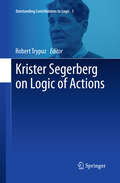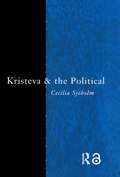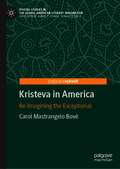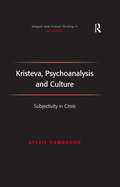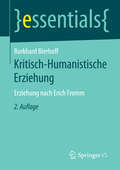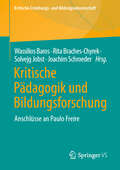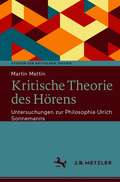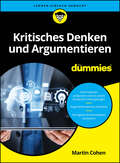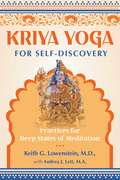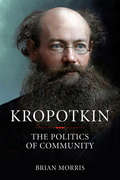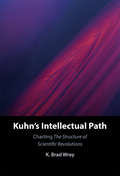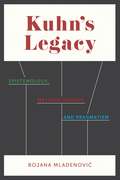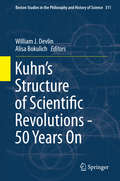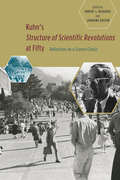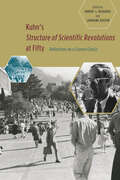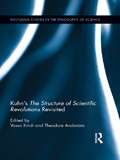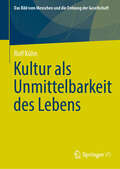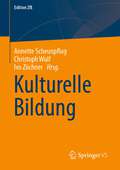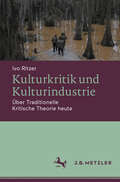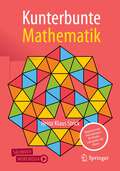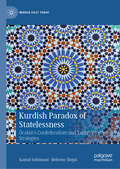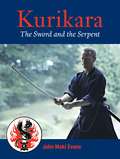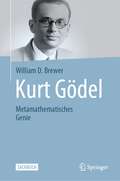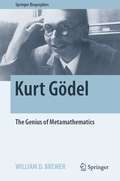- Table View
- List View
Krister Segerberg on Logic of Actions
by Robert TrypuzThis volume describes and analyzes in a systematic way the great contributions of the philosopher Krister Segerberg to the study of real and doxastic actions. Following an introduction which functions as a roadmap to Segerberg's works on actions, the first part of the book covers relations between actions, intentions and routines, dynamic logic as a theory of action, agency, and deontic logics built upon the logics of actions. The second section explores belief revision and update, iterated and irrevocable beliefs change, dynamic doxastic logic and hypertheories. Segerberg has worked for more than thirty years to analyze the intricacies of real and doxastic actions using formal tools - mostly modal (dynamic) logic and its semantics. He has had such a significant impact on modal logic that "It is hard to roam for long in modal logic without finding Krister Segerberg's traces," as Johan van Benthem notes in his chapter of this book.
Kristeva and the Political (Thinking the Political)
by Cecilia SjoholmJulia Kristeva is one of the most influential French thinkers of the twentieth century and is best known for her work in linguistics. Even though her work has been very influential, the political implications of her writings have so far been neglected. Kristeva and the Political is the first book to explore the relation of Kristeva's work to the political and casts new light on her work, connecting her to recent developments in literary theory, political theory, and cultural studies. In particular it shows how Kristeva's account of the unconscious and psychoanalysis generally, widens the notion of the political.Each chapter introduces a fundamental theme in Kristeva's work, highlighting a specific period of development in her thought and drawing on texts from the 1960s through to the 1990s. Themes addressed include Kristeva's theory of discourse, the theory of the subject, the notion of alterity, feminism and marginality and her theory known as the 'politics of meaning'. Kristeva and the Political also shows how Kristeva's notions of the political draw on a rich array of thinkers and writers, from Freud, Melanie Klein and Lacan, to Proust and Marguerite Duras.
Kristeva in America: Re-Imagining the Exceptional (Pivotal Studies in the Global American Literary Imagination)
by Carol Mastrangelo BovéThis Pivot studies the influence of Julia Kristeva’s work on American literary and film studies. Chapters consider this influence via such innovative approaches as Hortense Spillers’s and Jack Halberstam’s to Paule Marshall’s fiction and Bram Stoker’s Dracula, respectively. The book also considers how critics in the United States receive Kristeva’s work on French feminism, semiotics, and psychoanalytic writing in complex, controversial ways, especially on the question of marginalized populations. Examples include Kelly Oliver and Benigno Trigo on Orson Welles’s The Lady from Shanghai and Touch of Evil as well as Frances Restuccia on David Lynch’s Mulholland Drive. Carol Mastrangelo Bové also examines Kristeva’s take on the US in her essays and fiction, which provide a vital part of the dialogue with American critics. Like them, Bové incorporates Kristeva’s thought in her own creative readings of little-known authors and directors including Christiane Rochefort, Nancy Savoca, and Frank Lentricchia.
Kristeva, Psychoanalysis and Culture: Subjectivity in Crisis (Ashgate New Critical Thinking in Philosophy)
by Sylvie GambaudoExamining Julia Kristeva's contention that contemporary Western society is witnessing a crisis of subjectivity due to the failure of the paternal function, Gambaudo places Kristeva's thesis within the context of Freudian psychoanalytic thought and shows how Kristeva defends her position against a cultural climate privileging scientific and cognitive answers to aesthetic concerns. Gambaudo argues that while Kristeva's position might be construed as defensive and a reactive clinging on to paternal modes of organisation of subjectivity, it also offers a unique and visionary analysis of subjectivity that rescues the paternal project from its decline. Eschewing a traditional emphasis on Kristeva's feminism, this book's primary interest is located at the intersection between psychoanalysis and culture, specifically analysing the superseding of Oedipus by narcissistic organisation.
Kritik – Intervention – Transformation: Feministische Widerständigkeit im hegemonialen Geschlechterdispositiv
by Jördis GrabowFeministische Bewegungen und ihre diversen widerständigen Praktiken haben in den vergangenen Jahren wieder an Sichtbarkeit gewonnen. Neben Protest- und Aktionsformen lassen sich auch zahlreiche Praktiken finden, die das Alltagsleben feministischer Akteur*innen prägen. Charakteristisch vereinen die heterogenen feministischen Widerstände Kritik-, Interventions- und Transformationspraktiken, die das hegemoniale Geschlechterdispositiv sowie realwirksame Hervorbringungen hinterfragen, angreifen und verändern. Die Autorin untersucht in ihrer explorativen Studie verschiedene Widerstandspraktiken und analysiert deren Bedeutung für gesellschaftliche Wandlungsprozesse. Bildet Geschlecht weiterhin die zentrale Bezugsdimension innerhalb feministischer Bewegungen? Wie definieren Feminist*innen die Kategorie Geschlecht und in welchem Verhältnis stehen ein theoretisches Geschlechterwissen, die feministische Praxis und das feministische Subjekt zueinander?
Kritisch-Humanistische Erziehung: Erziehung nach Erich Fromm (essentials)
by Burkhard BierhoffKann Erziehung freie Menschen hervorbringen? In diesem "Erziehungs-Manifest" sollen einige Argumentationslinien Erich Fromms nachvollzogen und für die Pädagogik als Wissenschaft und Praxis erschlossen werden. Eine gelungene Erziehung im Sinne von Fromm hilft dem Menschen, eine authentische Identität zu entwickeln, fördert seine kritischen Fähigkeiten und unterstützt den kreativen Ausdruck seiner Persönlichkeit. Ziel ist der freie Mensch, der gegenüber Manipulation und Einschüchterung immun ist und sich mit Liebe und Vernunft der Welt zuwendet. Die Beschäftigung mit Fromm bietet für ein solches Erziehungskonzept viele produktive Anregungen.
Kritische Pädagogik und Bildungsforschung: Anschlüsse an Paulo Freire (Kritische Erziehungs- und Bildungswissenschaft)
by Rita Braches-Chyrek Joachim Schroeder Wassilios Baros Solvejg JobstDer Band greift theoretische und methodische Ansätze Paulo Freires auf, dessen Kampf für Gerechtigkeit und Solidarität beispielhaft für eine radikale Kritik am bestehenden, postkolonialen neoliberalen System ist. In der Auseinandersetzung mit Freires Position der kritischen Erziehungswissenschaft eröffnen sich neue, die bisherigen Grenzen überschreitende Möglichkeiten.
Kritische Theorie des Hörens: Untersuchungen zur Philosophie Ulrich Sonnemanns (Studien zur Kritischen Theorie)
by Martin MettinDie Geschichte der Philosophie ist eine Geschichte des denkenden Sehens. Zwar bedeutet dieses Sehen Aufklärung, jedoch wächst kulturgeschichtlich zugleich seine Tendenz zum instrumentellen Registrieren, zur „Okulartyrannis“. Es sind die im Zuge dieses Prozesses vernachlässigten Potentiale des Hörens, die einen kritischen Einspruch gegen solche Verdinglichung geltend machen können. Diese These der späten Arbeiten Ulrich Sonnemanns nimmt Martin Mettin zum Ausgangspunkt. Dabei rekonstruiert er entlang des Sonnemannschen Œuvres die Untergrundgeschichte einer verdrängten Philosophie des Hörens. Aufklärung erweist sich hier als Forderung nach Hellhörigkeit, nach einer sensiblen Aufmerksamkeit für die von Widersprüchen verdunkelte Welt. Erstmalig stellt das vorliegende Buch alle Werkphasen Ulrich Sonnemanns in ihrem systematischen Zusammenhang dar und ruft damit einen zu Unrecht vergessenen Denker des 20. Jahrhunderts wieder ins öffentliche Bewusstsein. Im Zentrum steht Sonnemanns Ansatz der Negativen Anthropologie (1969). Anhand dieser ergründet der Autor die philosophische Bedeutung von Hörerfahrungen im Zusammenspiel von Ideen- und Zeitgeschichte, Erkenntnistheorie, Sprachphilosophie und Psychoanalyse.
Kritisches Denken und Argumentieren für Dummies (Für Dummies)
by Martin CohenEinfach gut argumentieren Kritisches Denken – die Fähigkeit, sich einen Überblick ??ber eine Situation oder ein Thema zu verschaffen, Informationen gezielt zu analysieren und sich dann ein fundiertes Urteil zu bilden – ist ??beraus wichtig in einer von vielen als un??bersichtlich empfundenen Zeit. Martin Cohen f??hrt Sie in dieses aufregende Thema ein und ergänzt die theoretischen Grundlagen um Beispiele und Übungen f??r die praktische Anwendung. Das Buch hilft Ihnen, Ihre Fähigkeit zu reflektierendem Denken zu entwickeln, Ihren Sinn f??r kritische Analysen zu verbessern und effektive Argumente herauszuarbeiten. Sie erfahren Was einen guten kritischen Denker ausmacht Wie Sie das kritische Denken und Argumentieren in der m??ndlichen und schriftlichen Praxis anwenden Wie Sie typische logische Fallstricke erkennen und vermeiden
Kriya Yoga for Self-Discovery: Practices for Deep States of Meditation
by Keith G. Lowenstein• Explains the basic techniques of the practice, detailing proper posture, breathwork exercises (pranayama), bandhas, third-eye gazing, and the use of mantra • Presents advanced, yet simple, techniques that accelerate a contemplative practice by micro-modulations related to posture, respiration, visualization, and sound • Includes wisdom from the author&’s teacher Ganesh Baba on the importance of the spine in Kriya yoga and the Cycle of Synthesis, a model of the human experience Kriya yoga is an ancient meditation technique that focuses on breathing and the spine to unlock deep states of awareness, self-realization, and spiritual growth. Kriya can provide a fast path to awakening, yet its practice has been shrouded in secrecy, passed only from master to initiate for millennia. Introduced into Kriya 40 years ago, Keith Lowenstein, M.D., offers an accessible yet detailed guide to Kriya yoga. He explains the basic techniques of the practice step by step, detailing proper posture, breathwork exercises (pranayama), visualization practices, and mantra. He reveals how Kriya is a scientific art--if practiced consistently, it will allow you to quickly enter deep states of meditation and ultimately experience inner stillness. He also explores how the practice of Kriya leads to healing and the development of compassion and the freeing joy of the union of Nature and Spirit. Sharing the wisdom of his Kriya yoga teacher Ganesh Baba, the author adds a detailed understanding of anatomy, especially the importance of the spine in Kriya yoga and energy flow. The author explores Ganesh Baba&’s teachings on spirit-infused science and the integration of Vedic philosophy, quantum mechanics, prana, and spiritualization illustrated in the Cycle of Synthesis. He also discusses the relationship between the exercises of Kriya yoga and Patanjali&’s Yoga Sutras as well as teachings from his other teachers, including Paramahansa Hariharananda. With this guide, you will gain an understanding not only of the practice of Kriya yoga but also of the spiritual wealth it brings, including the ultimate self-realization of non-dual reality.
Kropotkin: The Politics of Community
by Brian MorrisThe 19th century witnessed the growth of anarchist literature, which advocated a society based on voluntary cooperation without government authority. Although his classical writings on mutual aid and the philosophy of anarchism are still published today, Peter Kropotkin remains a neglected figure. A talented geographer and a revolutionary socialist, Kropotkin—often known as the anarchist prince—was one of the most important theoreticians of the anarchist movement. In Kropotkin: The Politics of Community, Brian Morris reaffirms with an attitude of critical sympathy the contemporary relevance of Kropotkin as a political and moral philosopher and as a pioneering social ecologist. Well-researched and wide-ranging, this volume not only presents an important contribution to the history of anarchism, but also offers insightful reflections on contemporary debates in political theory and ecological thought, analyzing such topics as anarchist communism, agrarian socialism, and integral education; modern science and evolutionary theory; the French Revolution and the modern state; and possessive individualism, terror, and war.
Kuhn's Intellectual Path: Charting The Structure of Scientific Revolutions
by K. Brad WrayThomas Kuhn's The Structure of Scientific Revolutions offers an insightful and engaging theory of science that speaks to scholars across many disciplines. Though initially widely misunderstood, it had a profound impact on the way intellectuals and educated laypeople thought about science. K. Brad Wray traces the influences on Kuhn as he wrote Structure, including his 'Aristotle epiphany', his interactions, and his studies of the history of chemistry. Wray then considers the impact of Structure on the social sciences, on the history of science, and on the philosophy of science, where the problem of theory change has set the terms of contemporary realism/anti-realism debates. He examines Kuhn's frustrations with the Strong Programme sociologists' appropriations of his views, and debunks several popular claims about what influenced Kuhn as he wrote Structure. His book is a rich and comprehensive assessment of one of the most influential works in the modern sciences.
Kuhn's Legacy: Epistemology, Metaphilosophy, and Pragmatism
by Bojana MladenovićThomas Kuhn’s The Structure of Scientific Revolutions is one of the most important books of the twentieth century. Its influence reaches far beyond the philosophy of science, and its key terms, such as “paradigm shift,” “normal science,” and “incommensurability,” are now used in both academic and public discourse without any reference to Kuhn. However, Kuhn’s philosophy is still often misunderstood and underappreciated. In Kuhn’s Legacy, Bojana Mladenović offers a novel analysis of Kuhn’s central philosophical project, focusing on his writings after Structure.Mladenović argues that Kuhn’s historicism was always coupled with a firm and consistent antirelativism but that it was only in his mature writings that Kuhn began to systematically develop an original account of scientific rationality. She reconstructs this account, arguing that Kuhn sees the rationality of science as a form of collective rationality. At the purely formal level, Kuhn’s conception of scientific rationality prohibits obviously irrational beliefs and choices and requires reason-responsiveness as well as the uninterrupted pursuit of inquiry. At the substantive, historicized level, it rests on a distinctly pragmatist mode of justification compatible with a notion of contingent but robust scientific progress. Mladenović argues that Kuhn’s epistemology and his metaphilosophy both represent a creative and fruitful continuation of the tradition of American pragmatism. Kuhn’s Legacy demonstrates the vitality of Kuhn’s philosophical project and its importance for the study of the philosophy and history of science today.
Kuhn's Structure of Scientific Revolutions - 50 Years On
by Alisa Bokulich William J. DevlinIn 1962, the publication of Thomas Kuhn's Structure 'revolutionized' the way one conducts philosophical and historical studies of science. Through the introduction of both memorable and controversial notions, such as paradigms, scientific revolutions, and incommensurability, Kuhn argued against the traditionally accepted notion of scientific change as a progression towards the truth about nature, and instead substituted the idea that science is a puzzle solving activity, operating under paradigms, which become discarded after it fails to respond accordingly to anomalous challenges and a rival paradigm. Kuhn's Structure has sold over 1. 4 million copies and the Times Literary Supplement named it one of the "Hundred Most Influential Books since the Second World War. " Now, fifty years after this groundbreaking work was published, this volume offers a timely reappraisal of the legacy of Kuhn's book and an investigation into what Structure offers philosophical, historical, and sociological studies of science in the future.
Kuhn's Structure of Scientific Revolutions at Fifty
by Robert J. Richards Lorraine DastonThomas S. Kuhn's The Structure of Scientific Revolutions was a watershed event when it was published in 1962, upending the previous understanding of science as a slow, logical accumulation of facts and introducing, with the concept of the "paradigm shift," social and psychological considerations into the heart of the scientific process. More than fifty years after its publication, Kuhn's work continues to influence thinkers in a wide range of fields, including scientists, historians, and sociologists. It is clear that The Structure of Scientific Revolutions itself marks no less of a paradigm shift than those it describes. In Kuhn's "Structure of Scientific Revolutions" at Fifty, leading social scientists and philosophers explore the origins of Kuhn's masterwork and its legacy fifty years on. These essays exhume important historical context for Kuhn's work, critically analyzing its foundations in twentieth-century science, politics, and Kuhn's own intellectual biography: his experiences as a physics graduate student, his close relationship with psychologists before and after the publication of Structure, and the Cold War framework of terms such as "world view" and "paradigm."
Kuhn's Structure of Scientific Revolutions at Fifty: Reflections on a Science Classic
by Lorraine Daston Robert J. Richards and Lorraine DastonThomas S. Kuhn’s The Structure of Scientific Revolutions was a watershed event when it was published in 1962, upending the previous understanding of science as a slow, logical accumulation of facts and introducing, with the concept of the “paradigm shift,” social and psychological considerations into the heart of the scientific process. More than fifty years after its publication, Kuhn’s work continues to influence thinkers in a wide range of fields, including scientists, historians, and sociologists. It is clear that The Structure of Scientific Revolutions itself marks no less of a paradigm shift than those it describes. In Kuhn’s “Structure of Scientific Revolutions” at Fifty, leading social scientists and philosophers explore the origins of Kuhn’s masterwork and its legacy fifty years on. These essays exhume important historical context for Kuhn’s work, critically analyzing its foundations in twentieth-century science, politics, and Kuhn’s own intellectual biography: his experiences as a physics graduate student, his close relationship with psychologists before and after the publication of Structure, and the Cold War framework of terms such as “world view” and “paradigm.”
Kuhn's The Structure of Scientific Revolutions Revisited (Routledge Studies in the Philosophy of Science)
by Theodore Arabatzis Vasso KindiThe year 2012 marks the 50th anniversary of the publication of Thomas S. Kuhn’s The Structure of Scientific Revolutions. Up until recently, the book’s philosophical reception has been shaped, for the most part, by the debates and the climate in philosophy of science in the 1960s and 1970s; this new collection of essays takes a renewed look at this work. This volume concentrates on particular issues addressed or raised in light of recent scholarship and without the pressure of the immediate concerns scholars had at the time of the Structure’s publication. There has been extensive research on all of the major issues concerning the development of science which are discussed in Structure, work in which the scholars contributing to this volume have all been actively involved. In recent years they have pursued novel research on a number of topics relevant to Structure’s concerns, such as the nature and function of concepts, the complexity of logical positivism and its legacy, the relation of history to philosophy of science, the character of scientific progress and rationality, and scientific realism, all of which are brought together and given new light in this text. In this way, our book makes new connections and undertakes new approaches in an effort to understand the Structure’s significance in the canon of philosophy of science.
Kultur als Unmittelbarkeit des Lebens (Das Bild vom Menschen und die Ordnung der Gesellschaft)
by Rolf KühnBestimmt man radikal phänomenologisch die Kultur als Subjekt wie Objekt ihrer selbst, dann beinhaltet dies eine jeweils gegebene Unmittelbarkeit des Lebens als Originarität aller subjektiv kulturellen Vollzüge. Dies wird methodisch in Auseinandersetzung mit empirischen wie transzendentalen Kulturanalysen wie bei Freud, Husserl, Henry und Derrida aufgegriffen, um sich danach inhaltlichen Manifestationen der Kultur wie Religion, Wissenschaft und Ästhetik zuzuwenden. Leitend bleibt dabei für die Zukunftsbestimmung unserer Kultur eine notwendige ko-pathische Aufmerksamkeit für das Leben, welche die Singularität aller kulturellen Vollzüge über die diskursive Begrenztheit eines rein objektivierenden Verständnisses hinaus am Werk sieht. Dabei wird auch dem Imaginären wie Fiktionalen ihr unumgehbares Recht eingeräumt, wie es besonders in der Kunst als Meta-Genealogie des Individuums und der Gemeinschaftlichkeit zum Ausdruck kommt.
Kulturelle Bildung (Edition ZfE #12)
by Christoph Wulf Ivo Züchner Annette ScheunpflugDas Buch vereinigt die Ergebnisse aktueller theoretischer und empirischer Forschung zur kulturellen Bildung. Untersucht werden zentrale Sparten wie bildende Kunst, Tanz, Musik, Museum und weite Formen kulturellen Engagements sowie unterschiedliche Zielgruppen, wie Schülerinnen und Schüler, Erwachsene, Lehrkräfte und Professionelle aus kunstbezogenen Berufen.
Kulturkritik und Kulturindustrie: Über Traditionelle Kritische Theorie heute
by Ivo RitzerEine heute mit Horkheimer ‚traditionell‘ zu nennende Kritische Theorie hatte einst betont, dass nur Theorie allein richtige Praxis in einer falschen Welt sein könne. Sie insistierte radikal auf der Autonomie des Denkens gegen jeden unvermittelten Aktivismus. Denn nur das Denken könne sich ein Moment nicht-instrumenteller Vernunft bewahren, welches es inmitten des negativen Ganzen zu verteidigen gelte. Bezeichnenderweise scheinen sich von eben diesem Impetus gerade die neu proliferierenden sogenannten ‚Critical Theories‘ der ‚Identitätspolitik‘ durch Depravation kritischen Denkens zu kulturrelativistischem Artenschutz besonders weit entfernt zu haben. Kritische Theorie aber betrieb nicht das Geschäft regressiver Aufklärungsdenunziation, sondern setzte stattdessen vielmehr auf das subversive Potential „ästhetischer Rationalität“ (Adorno). Als deren affirmativer Gegner wirkt heute eine ‚diversifizierte‘ Kulturindustrie, in der völkische Ideologie eine gegenaufklärerische Renaissance erlebt und dem postmodernen Kapitalverhältnis der ideale Rahmen seiner globalen Reproduktion geboten wird. Diese neue alte Kulturindustrie demonstriert: Kultur muss sich wandeln, damit alles so bleibt, wie es ist. Der Band eröffnet eine neue hermeneutische Perspektive auf die Arbeiten von Horkheimer, Adorno, Marcuse et al. Dabei geht es mit dem Fokus theoriebasierter Kulturkritik weder um eine historische Rekonstruktion noch um eine Detailstudie zu ausgewählten Aspekten, sondern um die Frage der Rolle von Kritischer Theorie heute insgesamt. Mithin ergibt sich für den Band neben der Darstellung zentraler Schriften von Horkheimer, Adorno und Marcuse auch der Anspruch eines eigenständigen Beitrags zur kulturkritischen Theoriebildung.
Kunterbunte Mathematik: Begeisternde Erkundungen für Kinder, Lehrende und Eltern
by Heinz Klaus StrickDieses Buch zeichnet ein – im wahrsten Sinne des Wortes – farbenfrohes Bild von Mathematik: Es stellt eine Auswahl von mathematischen Themen vor, die mithilfe durchgehend farbig gestalteter Abbildungen und unterstützt durch möglichst einfache Erläuterungen erschlossen werden. Auf Formeln und Rechnungen wurde soweit wie möglich verzichtet.Das Buch eignet sich insbesondere für Kinder ab etwa 8 Jahren und Jugendliche. Lehrenden und Eltern bietet es entsprechende Anregungen für gemeinsame mathematische Erkundungen. Die einzelnen Kapitel sind im Wesentlichen unabhängig voneinander lesbar, sodass sie möglichst vielseitig einsetzbar sind. Durch regelmäßig eingestreute Anregungen zum Nachdenken und Anstöße für eigene Untersuchungen wird mathematisches Entdecken erlebbar. Lösungshinweise zu diesen Anregungen sowie Kopiervorlagen werden online zur Verfügung gestellt.Die Mehrzahl der Themen wird Leserinnen und Lesern der beliebten Bücher Mathematik ist schön, Mathematik ist wunderschön und Mathematik ist wunderwunderschön bekannt vorkommen – es handelt sich um eine Auswahl von Inhalten aus diesen Büchern, die hier größtenteils völlig neu aufbereitet wurden: Die Darstellungen sind im vorliegenden „kunterbunten“ Buch nochmal sehr viel anschaulicher, ausführlicher und kindgerechter. Außerdem sind weitere Themen hinzugekommen, die sich besonders für jüngere Mathematikinteressierte eignen.
Kurdish Paradox of Statelessness: Öcalan's Confederalism and Turkeyification Strategies (Middle East Today)
by Kamal Soleimani Behrooz ShojaiThis book critically examines Abdullah Öcalan’s proposal of "democratic confederalism," introduced in 2005, and its theoretical and practical implications. Despite its claims to transcend the nation-state model, Öcalan’s project leaves the colonial structures of the Turkish, Persian, and Arab states unchallenged, legitimizing their assimilatory and genocidal tendencies. It fails to secure Kurdish self-determination or protect linguistic and cultural rights, including mother-tongue education. The study interrogates these contradictions, offering a comprehensive critique of Öcalan’s ideology and its limited impact on governance, Kurdish identity, and aspirations for autonomy. Drawing on Öcalan’s original Turkish writings, the book challenges prevailing scholarship that often relies on selective translations and sympathetic interpretations. It reveals the foundational limitations of Öcalan’s approach, exposing the structural barriers it sustains and its complicity in perpetuating Turkification tendencies under the guise of Kurdish politics.
Kurikara: The Sword and the Serpent
by John Maki EvansInMikkyo-Japanese esoteric Buddhism-the dragon Kurikara symbolizes the internal energy developed through sword practice. Kurikara is a manifestation of the fierce bodhisattva Fudo Myo O, the patron of ascetics and warriors in Japan, who uses his sword to destroy delusions and sever attachments. Fudo’s sword represents the gaining of discriminative power and decisiveness-the ability to cut through illusion and attachment. This leads to the development of an inner energy that allows one to “burn up” all obstacles to spiritual freedom. Kurikara: The Sword and the Serpentsets out the eight basic principles of swordsmanship common to all Japanese sword schools, emphasizing the cultivation of power and mental focus. Accomplished martial artist John Evans provides practical examples from his experience with the sword arts as well asMikkyoandshugendo(mountain asceticism). The first foreign student to train with Nakamura Taisaburo sensei-widely acknowledged as the master of the sword artbattodo-Evans clearly explains how skill such as Nakamurua sensei’s can be systematically developed throughtanren, exercises that meld “inner” and “outer” power. Filled with fascinating anecdotes from Evans’s training in Japan,Kurikarais a useful, inspiring guide to Japanese sword practice and its spiritual underpinnings.
Kurt Gödel: Metamathematisches Genie
by William D. BrewerZu seinen Lebzeiten war Kurt Gödel außerhalb der Fachwelt der Mathematiker, Philosophen und theoretischen Physiker kaum bekannt. Zu Beginn seiner Karriere schuf er beeindruckende Arbeiten zur Vollständigkeit und Beweisbarkeit formaler logischer Systeme, die zu seiner Dissertation und seiner Habilitations-schrift wurden und ihn unter Fachleuten weltberühmt machten. Seine Unvoll-ständigkeitssätze läuteten das Ende der formal-logischen Programme der Logizisten (Russell et al.) und der Formalisten (Hilbert et al.) ein. Später erzielte er auch signifikante Ergebnisse in der Mengenlehre. Nach seiner Emigration in die USA (Princeton), widmete er sich mehr der Philosophie, dem Leitmotiv seines Lebens, und er fand auch eine einzigartige Lösung zu Einsteins Feld-gleichungen der Gravitation, sein “Gödel-Universum“. Dieses Buch beschreibt sowohl den Gödel, der ein genialer Wissenschaftler war, und der gewagte und neuartige Hypothesen zu den Fundamenten der Mathe-matik und Physik hervorbrachte, ‒ als auch den Gödel, der ein perfekter Rationalist war, aber sein Alltagsleben nur mit Mühe meistern konnte und zeitlebens unter Depressionen, Angstneurosen und Hypochondrie litt. Ein Leben voller Paradoxen, in dem er trotz all seiner psychischen Probleme Beachtliches leistete und zu einem Vorbild für viele jüngere Wissenschaftler wurde. Das Buch liefert den Kontext zu seinen Errungenschaften, die ein verblüffend breites Spektrum intellektueller Unternehmungen darstellen, und zu seiner zunehmenden Geisteskrankheit; und es zeigt, wie er eine lange und erfolgreiche Karriere mit Hilfe seiner loyalen Ehefrau Adele und einigen seiner Freunde durchlaufen konnte. Dies ist eine faszinierende Geschichte der wissen-schaftlichen Genialität und der menschlichen Natur.
Kurt Gödel: The Genius of Metamathematics (Springer Biographies)
by William D. BrewerDuring his lifetime, Kurt Gödel was not well known outside the professional world of mathematicians, philosophers and theoretical physicists. Early in his career, for his doctoral thesis and then for his Habilitation (Dr.Sci.), he wrote earthshaking articles on the completeness and provability of mathematical-logical systems, upsetting the hypotheses of the most famous mathematicians/philosophers of the time. He later delved into theoretical physics, finding a unique solution to Einstein’s equations for gravity, the ‘Gödel Universe’, and made contributions to philosophy, the guiding theme of his life. This book includes more details about the context of Gödel’s life than are found in earlier biographies, while avoiding an elaborate treatment of his mathematical/scientific/philosophical works, which have been described in great detail in other books. In this way, it makes him and his times more accessible to general readers, and will allow them to appreciate the lasting effects of Gödel’s contributions (the latter in a more up-to-date context than in previous biographies, many of which were written 15–25 years ago). His work spans or is relevant to a wide spectrum of intellectual endeavor, and this is emphasized in the book, with recent examples. This biography also examines possible sources of his unusual personality, which combined mathematical genius with an almost childlike naiveté concerning everyday life, and striking scientific innovations with timidity and hesitancy in practical matters. How he nevertheless had a long and successful career, inspiring many younger scholars along the way, with the help of his loyal wife Adele and some of his friends, is a fascinating story in human nature.
